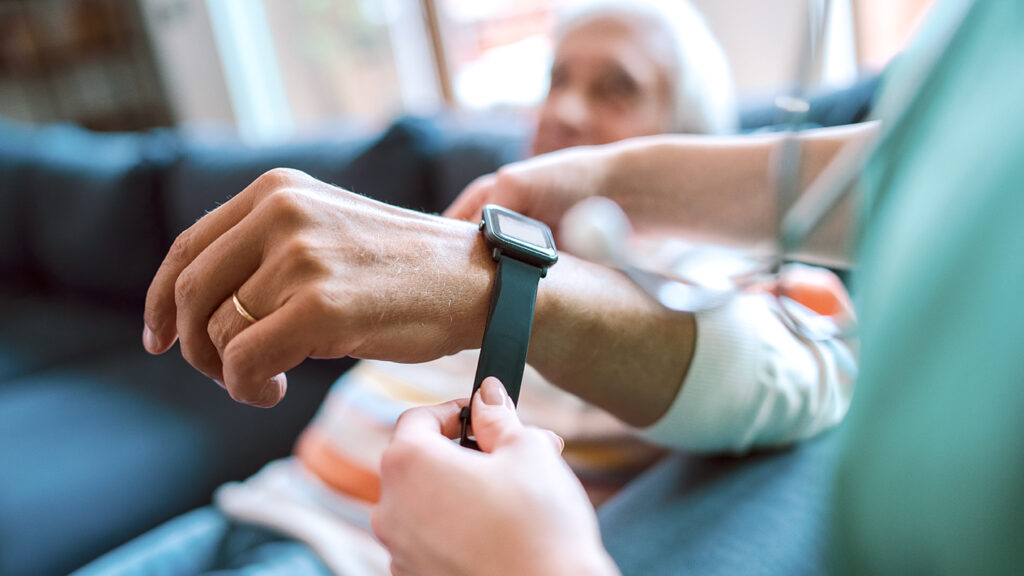

Turkey-based digital health startup h2o therapeutics announced its new Apple Watch-enabled freezing of gait-cueing feature, dubbed Foggy, has received Food and Drug Administration listing as a Class II medical device and is available via prescription. The feature is designed for people living with Parkinson’s disease.
Parkinson’s affects millions worldwide, including many long-term care residents. A 2015 analysis of Medicare data published in the journal Neurology found that 25% of people with Parkinson’s resided in a long-term care facility such as a nursing home or assisted living community. The ailment presents unique challenges to both caregivers and individuals. Freezing of gait is when someone has temporary episodes of an inability to step forward. Such episodes often cause falls to occur.
Foggy uses the Taptic Engine in Apple Watch, which provides a gentle tap on the wrist to provide stimulation.
“Cueing strategies hold immense promise in aiding individuals with freezing of gait,” said Yagmur Selin Gulmus, founder of h2o therapeutics. “However, the key to their effectiveness lies in accessibility, individualization and ease of use.”
“Foggy also acts as a data platform. This allows us to better understand freezing of gait and individualize our technology to meet the specific needs of those experiencing it,” he added.
The company timed its introduction of Foggy to coincide with World Parkinson’s Day, which occurs April 11 each year, Gulmus said.
Parkinson’s research has flourished, much of it centered on stimulating certain areas of the braid. Yet, although deep brain stimulation, or DBS, remains a powerful tool for treating older adults’ neurologic disorders, scientists have been searching for alternatives that are less invasive.
New research involving externally stimulating the brain with an electric current, for example, caused activity to shift in a way that could lead to a breakthrough in how certain conditions, such as Alzheimer’s or Parkinson’s diseases, are treated.

